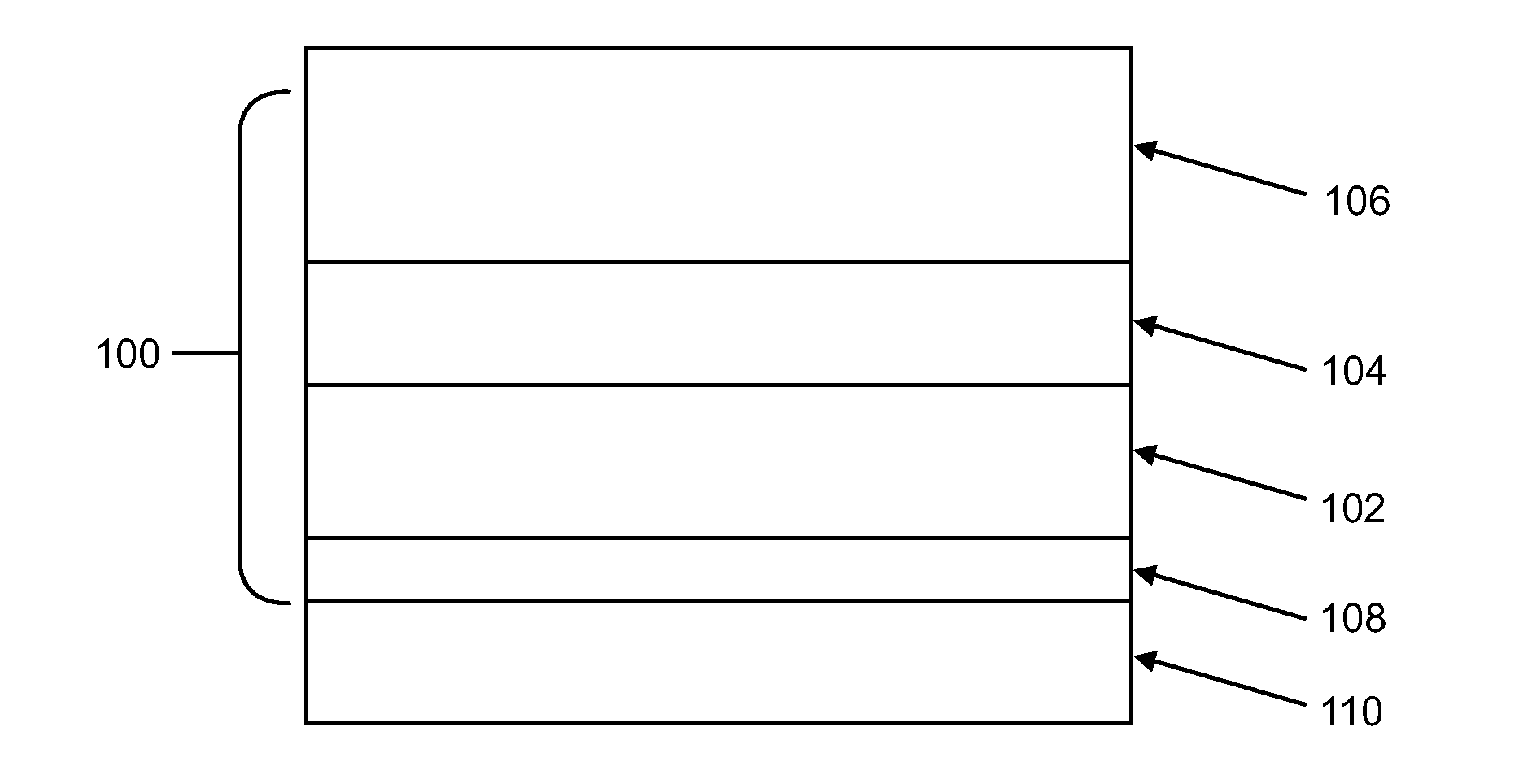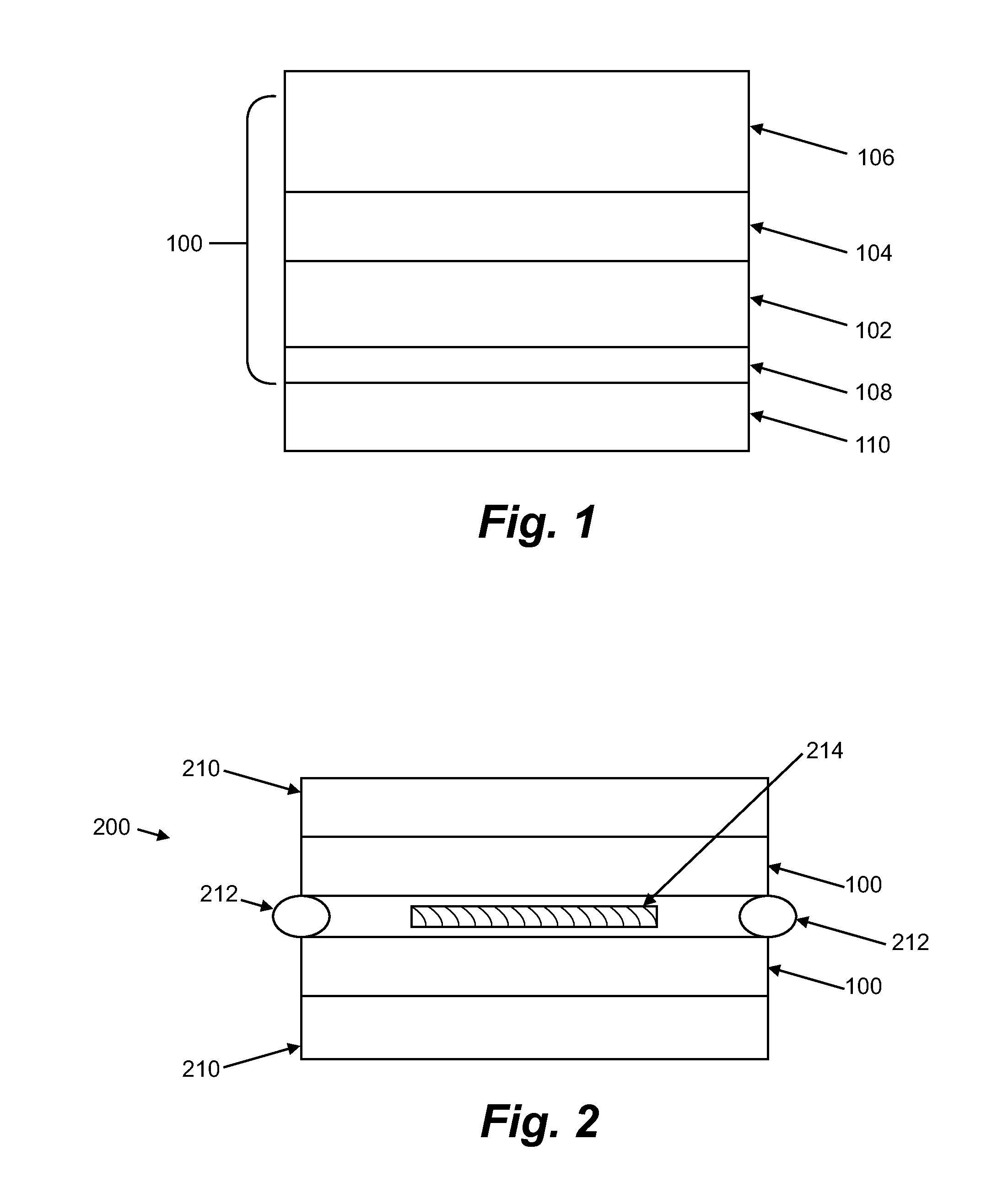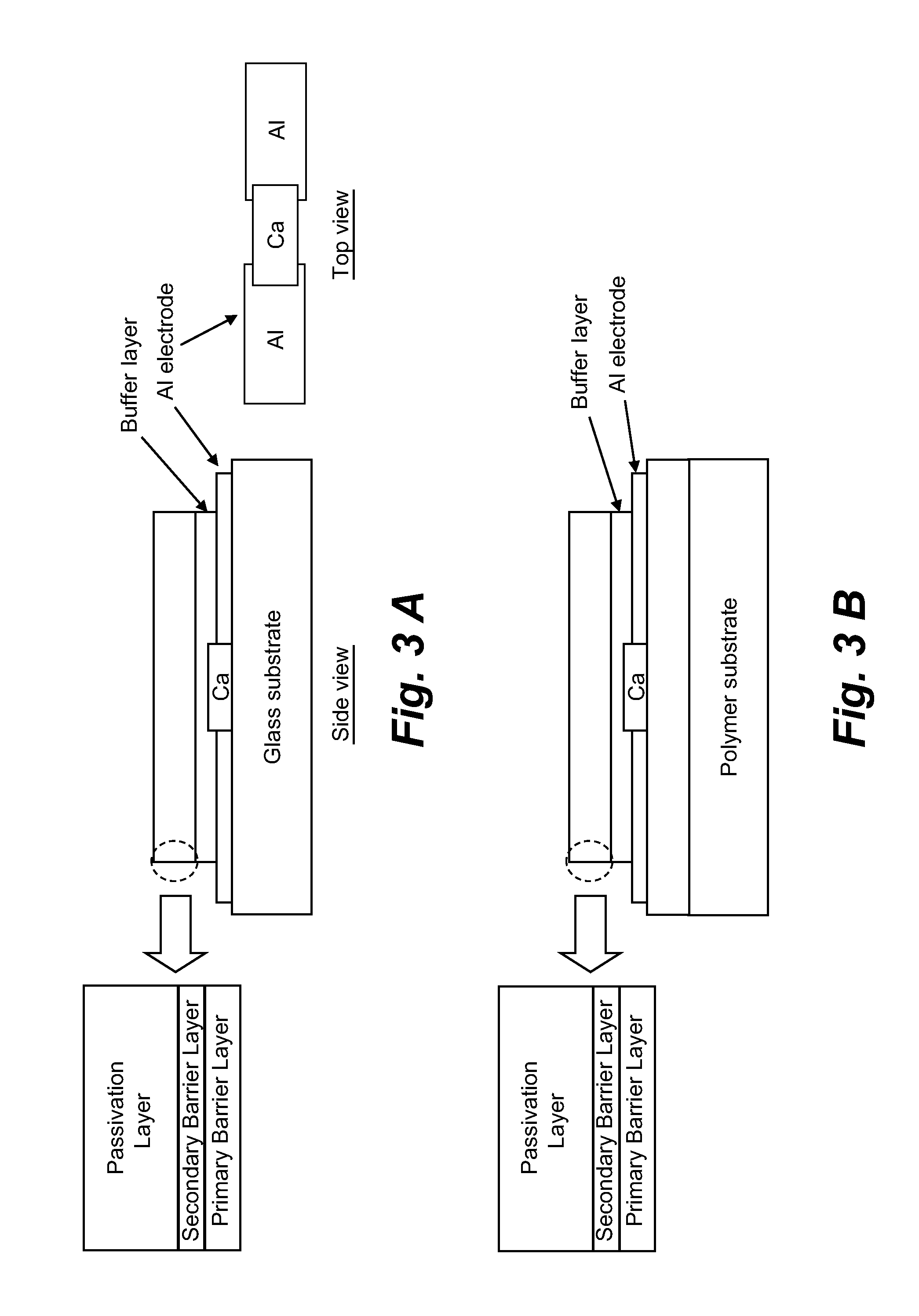Environmental barrier coating for organic semiconductor devices and methods thereof
a technology of organic semiconductor devices and environmental barrier layers, applied in the field of environmental barrier films, can solve the problems of limiting the shelf life and operational stability of many organic electronics devices, affecting the stability of organic semiconductor devices, and cells being subjected to a variety of uncontrollable conditions, so as to reduce the exposure of different primary and secondary barrier layers
- Summary
- Abstract
- Description
- Claims
- Application Information
AI Technical Summary
Benefits of technology
Problems solved by technology
Method used
Image
Examples
example 1
Preparation of Environmental Barrier Coatings on Glass Substrates
[0100]In this example, the substrate was glass, and a buffer layer comprised of an about 400 nm thick layer of SiOx was deposited on the calcium sensor and two aluminum electrodes using PECVD. A primary barrier layer of SiOx with a thickness of about 100 nm was deposited on the buffer layer using PEVCD. A secondary barrier layer of Al2O3, having a thickness of about 50 nm, was deposited on top of the primary barrier layer using ALD. Finally, a passivation layer of parylene with a thickness of 1 μm was deposited on top of the secondary barrier layer. The complete structure is shown in the FIG. 4A.
[0101]The precursors used for the PECVD depositions included SiH4, N2O, and NH3. The flow rates of SiH4, and N2O were about 400 standard cubic centimeters per minute (sccm) and about 3000 sccm, respectively. The precursors were then reacted between two parallel plates in a radio frequency (RF) induced plasma to deposit SiOx. Th...
example 2
Preparation of Environmental Barrier Coatings on Glass Substrates
[0105]In this example, the substrate was glass, and a buffer layer comprised of an about 400 nm thick layer of SiOx was deposited on the calcium sensor and two aluminum electrodes using PECVD. A primary barrier layer of SiNx with a thickness of about 100 nm was deposited on the buffer layer using PEVCD. A secondary barrier layer of Al2O3, having a thickness of about 50 nm, was deposited on top of the primary barrier layer using ALD. Finally, a passivation layer of parylene with a thickness of 1 μm was deposited on top of the secondary barrier layer. The complete structure is shown in the FIG. 5A.
[0106]The precursors used for the PECVD depositions of SiOx included SiH4, N2O, and NH3. The flow rates of SiH4, and N2O were about 400 sccm and about 3000 sccm, respectively. The precursors used for the PECVD depositions of SiNx included SiH4, N2, He, and NH3. The flow rates of SiH4, N2, He, and NH3 were about 200 sccm, about ...
example 3
Preparation of Environmental Barrier Coatings on Glass Substrates
[0110]In this example, a device was prepared exactly as described in Example 1, with the exception that the secondary barrier layer of Al2O3, grown using ALD, was prepared with a thickness of about 10 nm. A schematic illustration of this structure is shown in FIG. 6A.
[0111]As shown in FIG. 6B, where the circles represent experimental data and the lines were fitted to extract effective WVTR values, the change in electrical conductance measured as a function of time yielded an effective WVTR value of about 4±0.5×10−5 g / m2 / day.
PUM
| Property | Measurement | Unit |
|---|---|---|
| thickness | aaaaa | aaaaa |
| thickness | aaaaa | aaaaa |
| thickness | aaaaa | aaaaa |
Abstract
Description
Claims
Application Information
 Login to View More
Login to View More - R&D
- Intellectual Property
- Life Sciences
- Materials
- Tech Scout
- Unparalleled Data Quality
- Higher Quality Content
- 60% Fewer Hallucinations
Browse by: Latest US Patents, China's latest patents, Technical Efficacy Thesaurus, Application Domain, Technology Topic, Popular Technical Reports.
© 2025 PatSnap. All rights reserved.Legal|Privacy policy|Modern Slavery Act Transparency Statement|Sitemap|About US| Contact US: help@patsnap.com



